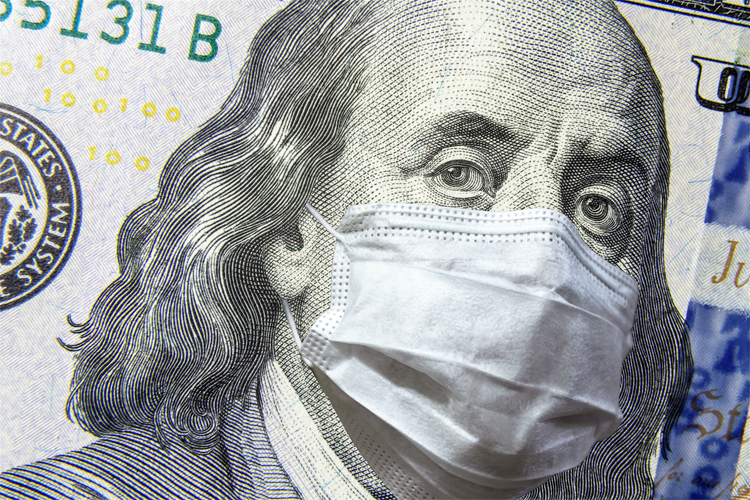The benefits space is changing and there is currently a shift to “enviable benefits” – ones that go beyond traditional health and retirement coverage. Many companies, especially those still doing well during the economic downturn, have ramped up benefits communication about existing support programs such as telemedicine, financial well-being and childcare. This communication is vital for employees, so they know the full range of offerings available to them. Many may be aware of benefits such as student loan payment programs, yearly reimbursements programs and no-cost financial and retirement planning services, but not all may know about the array of healthcare support available.
Since the onset of the COVID-19 pandemic, we have seen changes in benefits happen more rapidly than ever before. In fact, some companies are completely rethinking their benefits strategies to address the new financial hardships brought on by COVID-19, while others are cutting or dropping coverage completely because of the financial hardships they’re incurring. At least 6% of companies have reduced or eliminated employer contributions or matches to their retirement plans and another 16% are considering taking that avenue according a survey of 369 firms by Pearl Meyer, a leading consultant firm.

Today’s environment has shown us that everything can change quickly and in these times of uncertainty, people are looking for options and flexible financial solutions. There is no telling how employers will react in the long term, but there are ways that businesses can address their employees’ concerns and help them navigate through this crisis with benefit solutions.
Take a look at the past
Examining the past could help provide a roadmap for how the future may play out. Often, employers evaluate benefit plans to better align with business goals. For example, High Deductible Health Plans (HDHPs) were increased in adoption by both employers and employees in the 2000s due to benefits afforded to both parties. This adoption accelerated with the Great Recession of 2008. By 2009, 8% of covered workers were enrolled in employer-sponsored HDHPs, compared to 5% in 2007. During the same period, the number of health savings accounts (HSAs)—and the average amount of contributions per account, also increased.
In 2009, the number of taxpayers reporting HSAs on their federal tax returns increased 13%, to 946,436, and the total amount of HSA contributions they reported increased 17%, to $2.6 billion. Even through the recession, the average HSA contribution increased 3.4% between 2008 and 2009.
Fast forward to today, many employers are once again struggling financially, and HDHPs along with HSAs present an opportunity for companies to save, especially for those who don’t offer them already.
HDHPs/HSAs are a win-win
Both HDHPs and HSAs offer unique savings features and give employees greater decision-making capabilities around their health and savings opportunities. At the same time, both plans can save employers money. Cost-sharing is more appealing than eliminating benefit options, especially with a lower-cost HDHP and tax-advantaged HSA. According to one cost-cutting model, the HDHP savings on premiums alone can be about $1,000 for each individual participant and $2,000 for a family. For example, an organization with 150 participants can save $150,000 per year for individuals and $300,000 for families.
HSAs offer a number of unique benefits including a triple tax advantage:1
• The account holder pays no taxes on deposits, interest or investment earnings1.
• There is also an opportunity to grow your balance by investing2
• An HSA can act as both a spending and savings account and can be used to pay for family members’ medical expenses, which reduces taxable income.
Furthermore, account holders can take their account with them if they change jobs, are laid off, furloughed or retire. In addition, like other accounts such as an IRA, there are no required minimum distributions.
Paying the for unexpected
HDHPs and HSAs bring numerous benefits to the table that are more relevant than ever given today’s environment. For example, a recent Bankrate poll found that 41% of Americans would need to dip into their savings in order to cover a $1,000 emergency and 37% would need to use a credit card, take a personal loan or borrow from friends or family.
HSAs are set up to help employees manage their money and build savings to fall back on when health emergencies arise. In addition, if a worker is furloughed or laid off, they could use the money to cover health premium costs such as COBRA.
In response to the current pandemic, the IRS expanded what HSAs cover, including:
• Preventative care coverage for certain chronic conditions
• Telehealth services before the deducible is met
• Over-the-counter drugs and healthcare supplies
You can also save your receipts and submit them for reimbursement.
How to drive HSA savings
Many accountholders are not actively contributing to their HSAs – in fact, a recent report by the Employee Benefits Research Institute found that only one-half of HSA owners contributed to their accounts in 2018, and 37% of HSAs did not receive any contributions (individual or employer) in 2018.
So, what can employers do to drive accountholders to increase their savings? As it turns out, plan design has a significant impact on how much people contribute to their HSAs. A few ways employers can help accountholders save more is by decreasing the HDHP annual deductible so that employees will save more. By doing this, the plan begins to share costs sooner. This means accountholders will spend less out of pocket on care and have more to contribute to their HSAs. Employers can also seed the HSA with an employer contribution. This is a huge incentive and helps employees recognize the advantages of their accounts, as well as increase employees’ ability to save for future expenses by providing an HSA match.
HDHPs and HSAs provide significant benefits to both employers and employees and can help counter the rising cost of healthcare benefits, especially in uncertain times.
Phil Mason, executive vice president and chief operating officer for Institutional Banking and director of Healthcare Services at UMB Bank.
1 All mention of taxes is made in reference to federal tax law. States can choose to follow the federal tax-treatment guidelines for HSAs or establish their own; some states tax HSA contributions. Please check with each state’s tax laws to determine the tax treatment of HSA contributions or consult your tax adviser. Neither UMB Bank n.a., nor its parent, subsidiaries, or affiliates are engaged in rendering tax or legal advice. Withdrawals for non-qualified expenses are subject to income taxes and a possible additional 20% penalty, if you’re under age 65.




